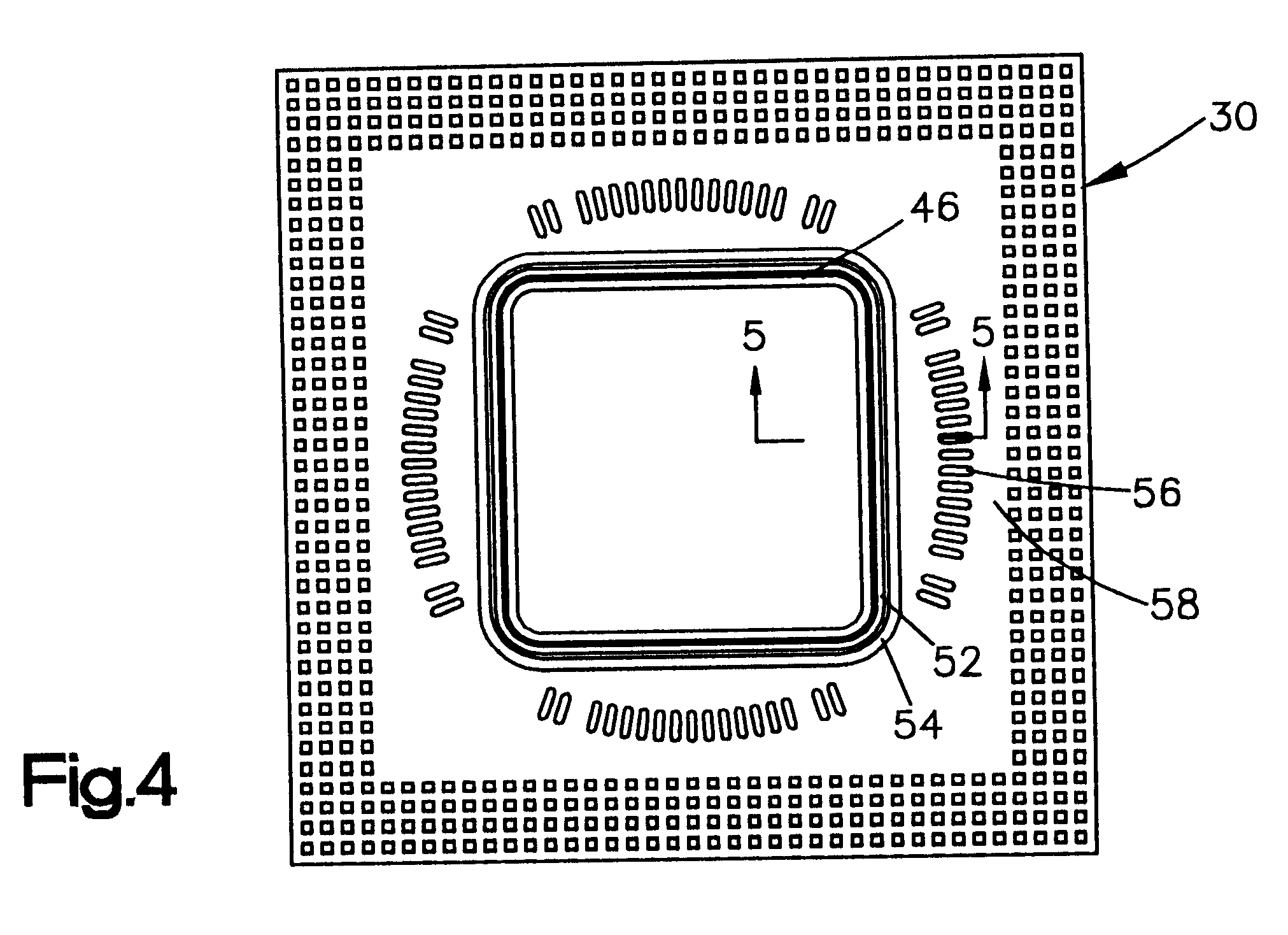Structure for preventing adhesive bleed onto surfaces
a technology of adhesive and surface, applied in the direction of material nanotechnology, semiconductor devices, semiconductor/solid-state device details, etc., can solve the problems of unreceptive surface of bond pads or other metal surfaces, affecting the service life of electrical contacts, and affecting the service life of adhesives
- Summary
- Abstract
- Description
- Claims
- Application Information
AI Technical Summary
Problems solved by technology
Method used
Image
Examples
Embodiment Construction
)
Referring now to the drawings, and, for the present, to FIG. 1, a planar chip carrier for use in the present invention is shown. The chip carrier includes an organic dielectric substrate 10 which has formed thereon a central die attach pad 12 which is connected to a ground ring 14 by fingers 16. A voltage or power ring 18 is also provided, as well as wire bond pads 20 on the surface of the substrate 10. All of the central die pad 12, ground ring 14, fingers 16, voltage or power ring 18, and wire bond pads 20, preferably are formed of gold, although other noble metals, such as palladium, platinum or silver, may be used in some instances. However, gold is the preferred material for these structures.
To attach an I / C chip or die 24 (FIGS. 3), an adhesive (not shown) is applied to the surface of the central die attach pad 12, and the die 24 is then mounted to the central die attach pad 12. A particularly useful adhesive for attaching the die 24 is a two part epoxy adhesive, such as Able...
PUM
| Property | Measurement | Unit |
|---|---|---|
| surface tension | aaaaa | aaaaa |
| surface tension | aaaaa | aaaaa |
| temperature | aaaaa | aaaaa |
Abstract
Description
Claims
Application Information
 Login to View More
Login to View More - Generate Ideas
- Intellectual Property
- Life Sciences
- Materials
- Tech Scout
- Unparalleled Data Quality
- Higher Quality Content
- 60% Fewer Hallucinations
Browse by: Latest US Patents, China's latest patents, Technical Efficacy Thesaurus, Application Domain, Technology Topic, Popular Technical Reports.
© 2025 PatSnap. All rights reserved.Legal|Privacy policy|Modern Slavery Act Transparency Statement|Sitemap|About US| Contact US: help@patsnap.com



